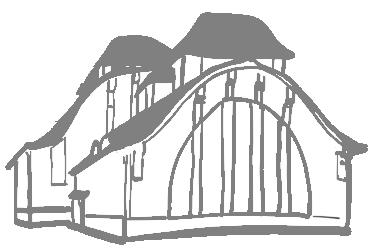…”In a photograph I took of the Rhine at Krefeld from the other side of the river, you can see one of the major industries of the city, and a gathering of seagulls. While it is a beautiful, and almost romantic image the seagulls are an indicator for the garbage that attracts them.
This photo became the centerpiece of a triptych. On its left panel, it tells you that 42 million cubicmeters of untreated sewage was dumped here into the river, in 1971″ … ¹
Foto: https://www.krefeld.de/de/pressemeldungen/zeitzeugen-der-haacke-ausstellung-in-haus-lange-gesucht/
HANS HAACKE:
IN CONVERSATION WITH TERRI COHN
…”This brings to mind your Rhinewater Purification Plant³ from 1972 that was installed at the Museum Haus Lange in Krefeld, Germany. I appreciate the way in which you created a greywater reclamation project in a museum setting. It seems it was well ahead of its time.
Water, of course, is not always shiny. It is affected by its physical environment, which, in turn, is often shaped by its social environment. The interaction of both was an essential aspect ofRhinewater Purification Plant.
Let me explain: Museum Haus Lange, like its parent, the Kaiser Wilhelm Museum in Krefeld, is a municipal institution. The director of both is a civil servant, appointed by the City. His budget is essentially the local taxpayers’ money; its size is determined by the elected members of the City Council.
In 1972, the City of Krefeld poured about 11 billion gallons of untreated wastewater into the Rhine. As part of a large triptych in my installation, I listed all contributors to this mess, including the number of gallons of their respective contribution. The largest polluter was a factory situated right on the Rhine that was part of the giant Bayer group of corporations.
Paul Wember, the director of the two museums of Krefeld, was well known, both nationally and internationally as a supporter of “avant-garde” art (that was the word then used for so-called “cutting edge”). Not once did he hint that what I was planning might not meet his criteria for what’s fit to exhibit in his museum. In fact, his office connected me with experts in city agencies from whom I got technical help and statistical information on the city’s wastewater disposal.”… ²
- Hans Haacke
**Born in 1936, Cologne, Germany Living in New York (since 1965)
https://www.paulacoopergallery.com/artists/hans-haacke/ - The New Museum will present a major retrospective of the work of Hans Haacke: Hans Haacke, The New Museum, New York, NY (10/16/19—1/5/20) https://www.newmuseum.org/exhibitions/view/hans-haacke
¹ The School of Art at The Cooper Union Inaugural Exhibition at the 41 Cooper Gallery: September 16 through October 27, 2009
https://yatesmckee.files.wordpress.com/2011/02/mckee_cooperpanel4.pdf
² SFAQ / NYAQ / LXAQ INTERNATIONAL ART AND CULTURE
http://sfaq.us/2016/06/hans-haacke-in-conversation-with-terri-cohn/
http://sfaq.us/wp-content/uploads/2016/05/Issue-24_web_full.pdf
Fotos und Hintergrund zu Rhinewater Purification Plant
und Krefeld Sewage Triptych,
mit der “Liste der Einleiter” im Jahre 1971 :
Ecology and Economics in the Art of Hans Haacke
In what ways do ecology and economics inter-relate in Hans Haacke’s work from the 1960s onwards?
Giulia Gentili
University of Edinburgh
https://static1.squarespace.com/static/52f5eb0ee4b013e3f9433ecd/t/58a1dea01b10e3f74fb8aaf9/1487003301465/Gentili+Haacke.pdf
